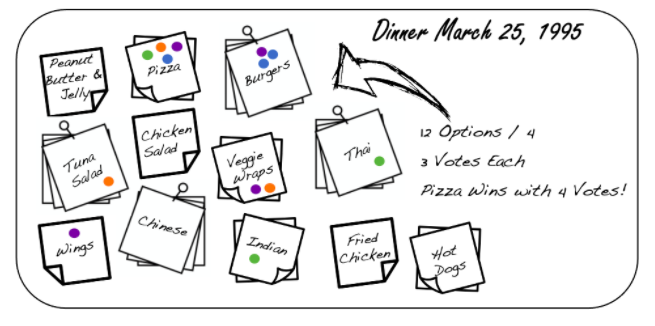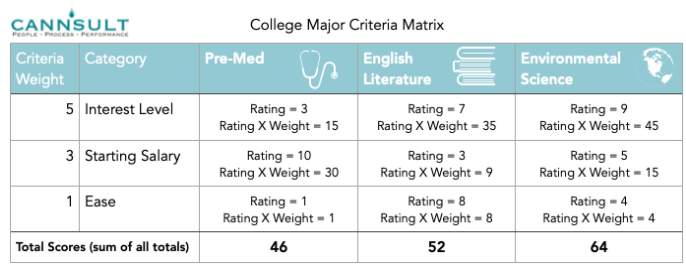Growing up I always thought it was funny when my mom told me she was a “Master Black Belt”. Of course in my mind she was on the set of Karate Kid with her disciples yelling “Yes, Sensai!” to her every command. But to my disappointment my mother still went on work trips in a suit and heels, and I never did find her karate “Gi” hidden in her carry-on. In fact, as I was to become aware of later in my childhood, my mother was a Master Black Belt of Lean Six Sigma, a process improvement method used by businesses and organizations around the world that uses “belts” to rank the skillset of a practitioner. In the simplest of terms, Lean Six Sigma is structured problem solving. Growing up, my mom would take business trips around the world as a professional problem-solver, fixing companies that were facing large and complex issues in a variety of processes. Lean Six Sigma was first used for manufacturing, but quickly spread across all types of industries and organizations such as banking, hospitality, healthcare, education and government, and as I learned very quickly, to home life!
Raising three rambunctious boys, my mother ran into her fair share of problems. She did her best to deal with us in a variety of ways, but somewhere along the road must have had the realization that if she can fix large international corporations, she can surely take on three boys! The end result of this was early life lessons that have not only helped in homelife, but have lasted well into my adult life as well.
Life Lesson 1: Multivoting – The kids can never agree on anything!
Multivoting (or “Nominal Technique” voting in Lean Six Sigma Terms) was most likely the first process improvement skill I was ever introduced to. And its usage is pretty simple! The first time I ever remember using multivoting was the eternal problem of picking a spot for dinner. Between my parents, brothers, and myself, there were five very different tastes in the family, and many times we would want to choose five different restaurants, always resulting in a pouty kid or two.

How it works;
- Hold a Brainstorm of all the options for dinner, and list all the ideas (no judging or commenting while the brainstorming is going on!)
- With a list of 12 possibilities, the rule is total options divided by 4 (or N/4) to determine how many votes each person is allowed, so 3 votes per person. More options, more votes!
- Each family member places their vote on one of the options. By the end of the voting, you will clearly see which idea is the most popular based on feedback from the group. No more verbal cyclone or campaigning for the best option!
This was a great way to settle any disagreements and give a great, visual representation of how the family decided (as a whole) what to have for dinner.
Of course, multivoting can be used for any situation where making a selection of one from many options. Vacation spots, weekend activities, what movie to watch on family movie night, were all instances I can distinctly remember multivoting.
What it taught me: When I grew up and went into the workforce, multivoting became second nature to me when managing teams. Whereas most managers would do a “raise-of-hand” vote, or “manager decides”, or even “whoever is the loudest”, I immediately went to structured multivoting.
Life Lesson 2: Criteria Matrix – Tough decisions to make
Without a doubt the most useful skill I was taught from a young age is the Criteria Matrix (or prioritization matrix). In Lean Six Sigma, this is a tool used to decide on one option from multiple alternatives and it’s based on prioritizing what’s important. My first time seriously using a Criteria Matrix by myself (although I’m sure my mother made several for me before), was making my college major decision. It was an undeniably valuable tool that helped me make a really tough decision where I felt stuck.
How it works (see graphic below!);
- List your options or alternatives. For me, the “alternatives” were college majors
- Identify the “criteria” for a “good” decision, and assign a weight to each one. For example, “Starting Salary” was an important criteria for me. Then, I assign the weight on a scale of 1 to 5, depending on just how important that criteria is for me. For starting salary, I consider it important, but not the most important, so I assigned a 3 to it. Another example could be “ease”. Obviously an easier major would be a plus, but the weight would have been a 1 since It’s just a little extra bonus (let’s think of it as a tiebreaker) .
- Assign scores to each criteria (on a scale of 1 to 10) based on the major. For example, starting salary for a Pre-Med Major would be 10, but ease would be a 1!
- Calculate the scores and add them up to give you the smartest decision
Criteria Matrices can be done informally on a piece of paper or a whiteboard when using it as a team. Or it can be done in an Excel template. The greatest value is that it helps you to make solid decisions quickly with real facts and data instead of emotions. Here’s a simple visual of how my college major decision would look. In this case, Environmental Science would be the most logical choice!

What it taught me: The Criteria Matrix not only exposed me to this type of simple math and logic early on, but has made decision making in my life significantly easier. My latest criteria matrix was choosing a car (cost, reliability, resale value, appearance), but in the past I’ve applied it to job options, cities I’d like to live in, and many management decisions in my worklife.
Download a criteria matrix template here for free using the promo code: “momblogsociety”
Life Lesson 3: Kanban – Chore day visualized!
Most of us have a general idea of this already, but didn’t know where it came from! Kanban is the classic “To-do, Doing, Done” list. It was actually started in Japan by Toyota, where they began to take abstract concepts like workflow and put them up visually in the factory. There are many deep levels to Kanban, but the general idea is simply to visualize work, and maximize efficiency. I can’t imagine my childhood, without the kanban board on Chore Day! My mother used it in a couple ways, the most memorable being “Easy/Gross/Hard”. Here’s how it worked;
- Assemble a list of chores that must be completed throughout the day on sticky notes
- Organize them into color-coded categories “easy” (ex. changing a lightbulb), “gross” (ex. cleaning the toilet), “hard” (ex. shoveling snow)
- Have each of the kids choose one (or however many the parent chooses) from each category, these are now their chores for the day
- Create a big board that has three sections, “To-do”, “Doing”, and “Done”
- Have the kids put all their chore sticky-notes in the to-do column, and as they begin to work on their first chore, move the sticky from “To-do” to “Doing” to “Done”, and go through chore day like this!
Sometimes there just wasn’t enough “gross” chores to be done, so we would take the category element out of the process. This added a visual representation to the day, and made it so that all the kids could see what the other kids were doing, sparing all the “he/she didn’t do anything!” bickering. That and some good music in the background made us secretly like Chore Day (but don’t tell my mom!).
What it taught me: Besides the obvious task-management element, Kanban also taught me in general how to get my tasks and workflow out of my head and onto paper. Visualizing my tasks throughout high school, college, and my professional life became second nature. And in a world full of electronics and distractions, there’s always something fun about breaking out the brightly colored sticky notes and markers.
These tactics and tools not only helped my mother keep our home organized and fun, but also strengthened the bond of her three sons and put skills and ideas into their heads that would last a lifetime. Have you ever used any of these methods in your home? Which are you most eager to try out?
Author Bio: Chicago native and West Virginia University graduate Adam DiFrisco is now the VP of Marketing of his mother’s company Cannsult, an international business consulting company that provides online and on-site process improvement for organizations from all industries. Adam also runs Cannsult’s Business Improvement Blog. He still hasn’t told his mother he enjoyed Chore Days.





The success of an event, startup, or company directly depends on when and what decisions are made, and how correct they are, and whether the tools from airslate are used. Unfortunately, there is no universal secret to finding answers to important business questions, and perhaps there can not be, since each manager has his own original approach.
But if you provide something valuable and are passionate about what you do, you will definitely get results over the coming months and years, develop keywords for this audience